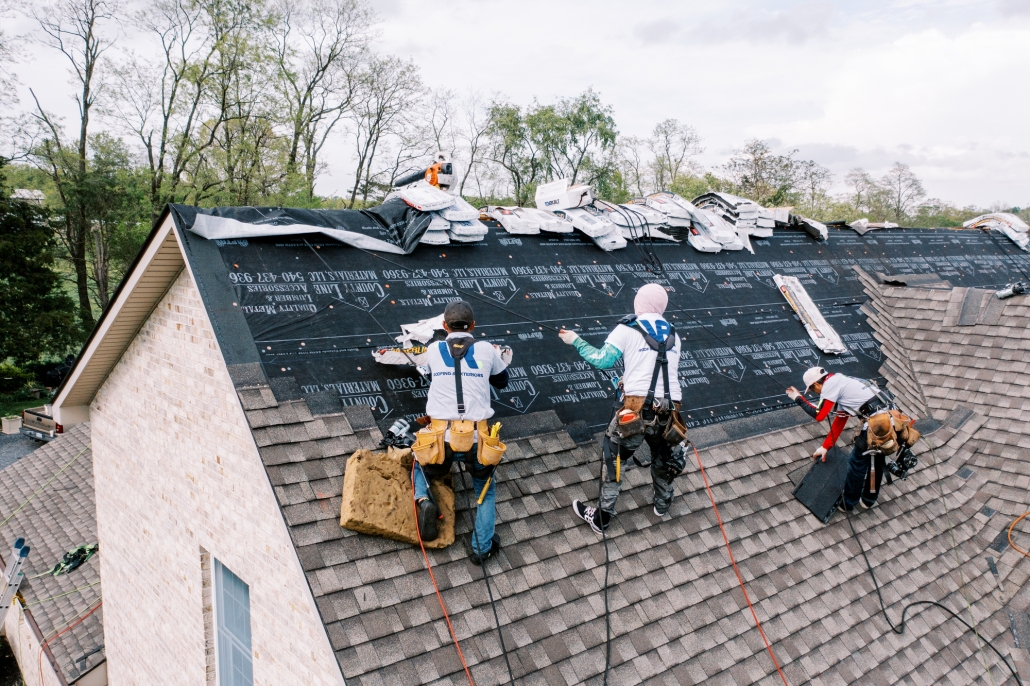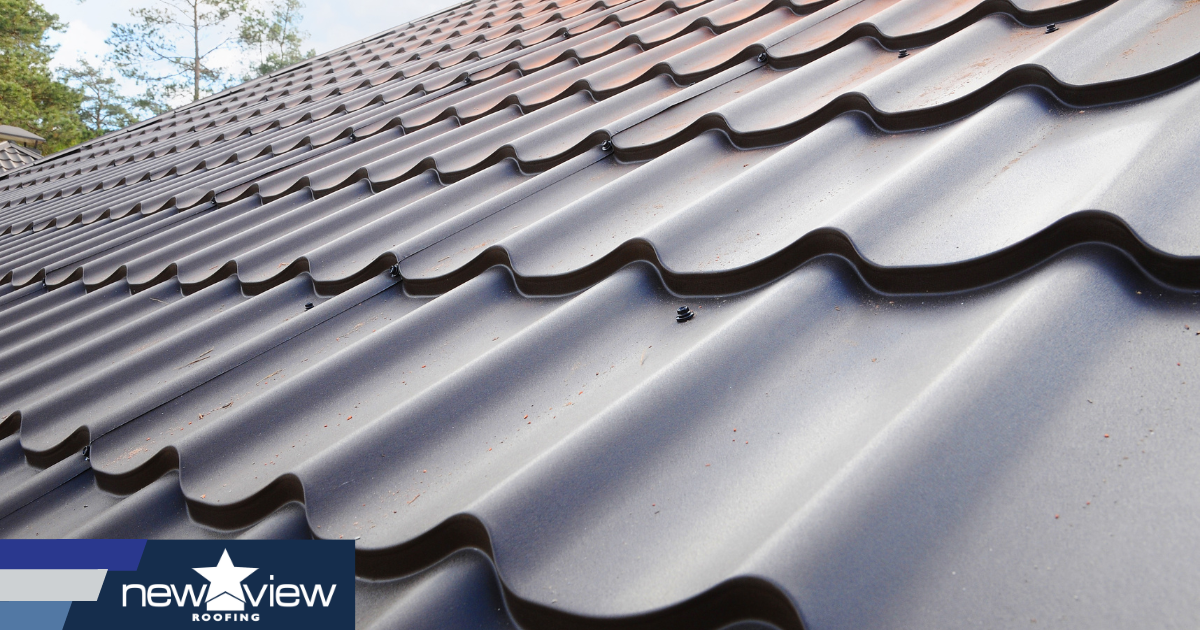The Advantages of Collaborating With Gainesville FL Roofing Companies
The Advantages of Collaborating With Gainesville FL Roofing Companies
Blog Article
Best Practices for Ensuring Proper Roof Covering Air Flow
Guaranteeing proper roofing ventilation is crucial for the longevity and performance of a roof. A well balanced consumption and exhaust air vent proportion, frequently 1:300, plays a crucial role, with consumption vents ideally positioned at the lower side of the roof for great air entrance and exhaust vents at the top for cozy air leave. Routine examinations to recognize obstructions and preserve clear air flow are paramount. In addition, keeping insulation far from vents is essential to avoid airflow limitation. Understanding these foundational components sets the stage for even more comprehensive understandings right into installation and upkeep techniques that can significantly improve your roof's efficiency.
Understand Ventilation Essentials
Properly understanding air flow basics is crucial for making certain the longevity and effectiveness of roof systems. Effective ventilation alleviates wetness buildup and temperature level extremes in the attic, both of which can lead to considerable architectural damages over time. A well-ventilated roofing system assists in stopping common issues such as mold and mildew growth, wood rot, and ice dams, which can jeopardize the honesty of the roof materials and the underlying frameworks.
The primary goal of ventilation is to promote the activity of air, permitting for a regular exchange between the interior and outdoor atmospheres. This equilibrium is attained through a mix of consumption and exhaust vents that interact to maintain optimal airflow. Intake vents, generally located along the soffits or eaves, allow fresh air to get in the attic space, while exhaust vents, commonly located at or near the roof ridge, enable warm, humid air to escape.
Key variables affecting the efficiency of roof covering ventilation consist of correct placement, adequate sizing, and ensuring that both consumption and exhaust vents are unobstructed. Regular examination and maintenance are vital to determine potential clogs, damages, or ineffectiveness in the ventilation system, therefore safeguarding the roofing's performance and sturdiness.
Sorts Of Roofing System Vents
Roofing vents play a crucial duty in maintaining efficient attic ventilation and, by expansion, the overall health of the roof covering system. Numerous types of roof covering vents are readily available, each with one-of-a-kind benefits tailored to specific roofing demands.

Soffit vents are set up under the eaves and operate in tandem with roofing vents to make certain a well balanced intake and exhaust system. By allowing cooler air to enter from below, soffit vents promote the expulsion of hot air via top vents. Gable vents, located on the outside wall surfaces of the attic room, offer an additional reliable option, particularly in homes with saddleback roofs.
Examine Your Present Air Flow

Next, consider the age and problem of your roofing products and ventilation parts. Older systems may not adhere to present structure codes or may have worn away gradually, decreasing their effectiveness. Conduct an extensive examination to identify any indicators of wear and tear, such as rust, damage, or voids that could jeopardize the system's efficiency.
Additionally, gauge the attic room temperature level and humidity levels. High temperatures and humidity can suggest poor ventilation.
Setup Best Practices
Reliable installment of roof covering ventilation systems is vital for guaranteeing optimal performance and long life. Correct setup begins with understanding the particular ventilation demands of the roofing system and the building it covers. This entails computing the right ratio of intake to tire vents, typically sticking to the 1:300 regulation, which specifies one square foot of air flow for each 300 square feet of attic room flooring area.

The placement of vents is equally vital. Consumption vents need to be set up at the roof's lower side, typically in the soffits, to enable awesome air to go into. Exhaust vents, on the various other hand, should be mounted near or at the roof's peak to help with the departure of warm, damp air. This produces an all-natural air movement that helps keep temperature and dampness balance within the attic room space.
Seal all vent connections thoroughly to avoid air leaks and possible site web water infiltration. Usage high-quality materials and adhere to maker standards to ensure toughness and efficiency. In addition, incorporating ridge vents with baffles can significantly boost air flow effectiveness by protecting against wind-driven rainfall and snow from entering the attic room.
Inevitably, precise installation of roof ventilation systems mitigates potential problems such as mold and mildew development, ice dams, and architectural damages, guaranteeing the roof covering's integrity and the building's overall health.
Normal Upkeep Tips
Uniformity in upkeep practices is essential to guaranteeing the long-lasting efficiency of roof ventilation systems. Regular inspections are important, preferably executed biannually-- in the springtime and autumn. During these examinations, make certain that vents are cost-free of particles, nests, and other blockages that might impede airflow. Inspect for any try here type of signs of dampness accumulation or mold, as these can indicate inappropriate ventilation or leaks (gainesville fl roofing companies).
Cleaning the vents is one more essential task. Utilize a soft brush or a vacuum cleaner to eliminate dirt and particles from consumption and exhaust vents. Beware not to harm the vent displays or louvers throughout the process. In addition, examine the attic room room for any type of indicators of water damage, which can compromise the stability of the roof.
Correct insulation is equally crucial. Make sure that attic insulation does not obstruct the vents, as this can badly limit air flow. If any insulation has actually changed or settled, reposition or replace it to maintain an efficient obstacle.
Finally, change any type of harmed or missing out on components without delay. Broken vents, broken roof shingles, or tatty blinking can all add to poor air flow and should be addressed right away. Routine maintenance makes sure that the roofing ventilation system functions optimally, thus extending the lifespan of the roof itself.
Final Thought
Making certain proper roof air flow is critical for keeping the effectiveness and durability of a roofing system. Adherence to the 1:300 intake and exhaust vent proportion, combined with the tactical positioning of vents, is necessary.
A balanced intake and exhaust air vent ratio, frequently 1:300, plays a pivotal role, with consumption vents ideally put at the reduced side of the roof covering for amazing air access and exhaust vents at the peak for cozy air departure. Consumption vents, usually situated along the eaves or soffits, permit fresh air to enter the attic room, while exhaust vents, commonly located at or near the roof covering ridge, enable hot, moist air to get away.
Soffit vents are mounted under the eaves and work in tandem with roofing system vents to ensure a click for source well balanced consumption and exhaust system. By allowing cooler air to enter from below, soffit vents assist in the expulsion of hot air via top vents. Adherence to the 1:300 consumption and exhaust vent proportion, combined with the critical positioning of vents, is essential.
Report this page